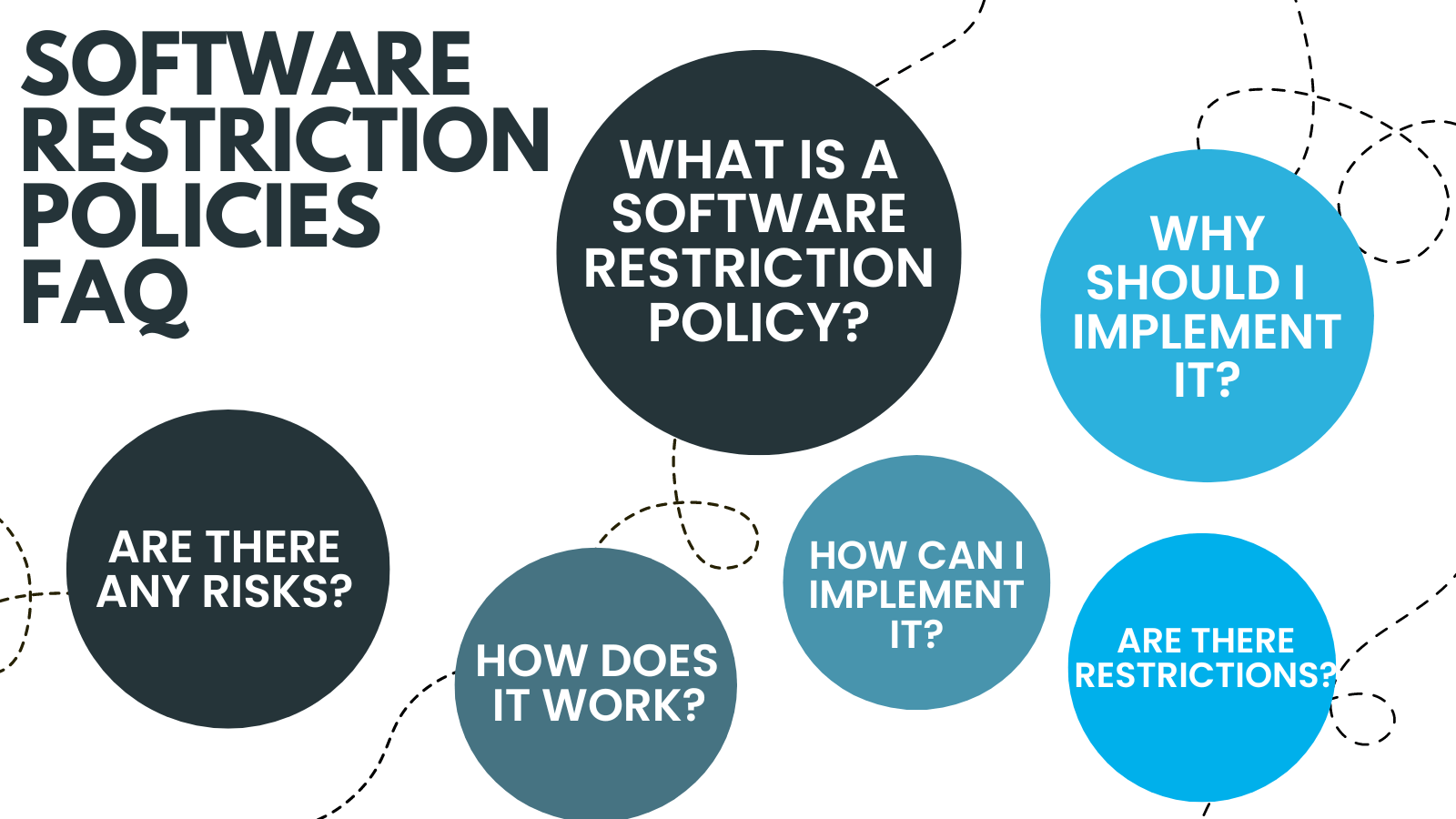Contents:
Businesses must protect their sensitive data and computer systems from increasingly sophisticated cyber threats. One effective way of doing so is by implementing a software restriction policy. But what exactly is a software restriction policy?
And how can it benefit your organization? In this article, we will explore the advantages of such a policy and why you should consider adopting it in your workplace. From preventing malware attacks to reducing IT costs, there are numerous benefits to be gained from enforcing strict rules on the software that runs on your company’s computers. So, let’s dive in and discover how you can enhance your cybersecurity with a software restriction policy!
What Is a Software Restriction Policy?
A software restriction policy is a set of rules that dictate what programs are allowed to run on an endpoint. These policies can be used to prevent malicious software from running, as well as to restrict users from running unauthorized programs. Software restriction policies can be implemented using Group Policy Objects (GPO) in Active Directory, or they can be configured directly on the local machine. GPOs offer the advantage of being able to centrally manage restrictions for multiple machines, but they require Active Directory and some familiarity with Group Policy management. Configuring restrictions directly on the local machine is simpler, but it must be done on each machine.
When configuring software restriction policies, administrators can specify specific programs that are always allowed to run, as well as specific programs that are always blocked. Additionally, administrators can define rules that allow or block programs based on their digital signatures, file path, or other criteria. Programs that are not specifically allowed by the policy will be blocked from running.
Software restriction policies can provide a high level of security for computers and networks, and they can help reduce the risk of malware infections. Additionally, these policies can help to reduce the number of support calls related to unauthorized software. Implementing a software restriction policy can be challenging, but the benefits are worth the effort.
Types of Software Restrictions
There are two main types of software restrictions: path rules and hash rules.
Path rules – restrict execution based on the file path of the program trying to run.
Hash rules – restrict execution based on a cryptographic hash of the program file. They are more secure, but they can be more difficult to configure and may not work with some programs that are installed in unusual locations.
When configuring software restriction policies, it is important to consider what programs should be allowed to run, as well as what needs to be blocked. Allowing all programs by default and then blocking specific programs can lead to issues if new programs are installed in locations that are not whitelisted. It is usually best to take a blacklist approach, only allowing specific programs to run while all others are blocked by default.
Advantages of Implementing a Software Restriction Policy
There are many advantages to implementing a software restriction policy within your organization. By doing so, you can help to prevent unauthorized software from being installed and executed on company computers. This can protect your network from malware and other threats that can come from malicious or unauthorized software.
Additionally, restricting software can help to improve employee productivity by preventing them from installing or using unauthorized applications that could consume company resources or time.
Finally, by implementing a software restriction policy, you can improve your overall security posture by ensuring that only authorized and trusted software is running on company endpoints.
Identifying and Classifying Risky Software
In order to implement a software restriction policy, organizations need to first identify which types of software pose a risk to their network. There are many different ways to classify risky software, but some common criteria include whether the software is unsigned, unapproved, or unknown; whether it comes from an untrusted source; or whether it has been identified as malware.
Once risky software has been identified, organizations can then take steps to restrict or block its execution. This might involve whitelisting approved applications, signing all executables, or using application control solutions that prevent unauthorized programs from running. By taking these measures, organizations can help protect their networks from potentially harmful software.
Best Practices for Implementing Software Restriction Policies
When it comes to implementing a software restriction policy, there are a few best practices that you should keep in mind.
- First and foremost, you need to make sure that your policy is clear and concise. It should be easy for users to understand what is and is not allowed under the policy.
- Secondly, you need to ensure that your policy is enforceable. This means having the right tools in place to track and monitor compliance.
- Lastly, you need to make sure that your policy is regularly reviewed and updated as needed. This will help to ensure that it remains effective over time.
Software Restriction Policies -FAQs
We already covered the definition and benefits, so here is a brief overview, with answers to questions that may arise:

1. What is a software restriction policy?
A software restriction policy is a security measure that can be implemented on a computer to restrict the execution of certain types of software. This type of policy can be used to prevent malicious software from running on a computer, or to restrict the use of certain types of software that may be deemed inappropriate for use on company endpoints.
2. How does a software restriction policy work?
A software restriction policy works by defining a set of rules that dictate which programs are allowed to run on a computer. These rules can be based on various criteria, such as the path of the program, the digital signature of the program, or the publisher of the program. Once these rules are in place, any attempt to run a program that does not meet the criteria will be blocked.
3. Why would I want to implement a software restriction policy?
There are many reasons why you might want to implement a software restriction policy. For example, you may want to prevent employees from running unauthorized programs on company computers, or you may want to restrict the use of certain types of programs that may be harmful to company computers. By implementing a software restriction policy, you can help to keep your company’s machines safe and secure.
4. What are some restrictions I need to consider before implementing a software restriction policy?
Some common restrictions that can be implemented with a software restriction policy include limiting execution to specific directories, blocking specific file types, and whitelisting approved applications.
5. Are there any risks associated with implementing a software restriction policy?
There are some risks associated with implementing a software restriction policy, such as the potential for false positives and the possibility of restricting legitimate applications from running. However, these risks can be mitigated by carefully crafting your rule set and testing it thoroughly before deploying it in production.
To Conclude
Implementing a software restriction policy can be an effective way to protect your computer systems and networks from malicious software. It is important to consider the potential risks and benefits associated with such policies, as well as the type of environment in which they should be implemented. Additionally, it is essential to ensure that all users are aware of these restrictions in order to ensure compliance. By taking these steps, organizations can benefit from improved system security and reduced risk of attack or data loss.


 Network Security
Network Security
 Vulnerability Management
Vulnerability Management
 Privileged Access Management
Privileged Access Management
 Endpoint Security
Endpoint Security
 Threat Hunting
Threat Hunting
 Unified Endpoint Management
Unified Endpoint Management
 Email & Collaboration Security
Email & Collaboration Security









